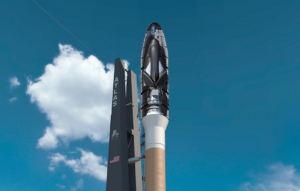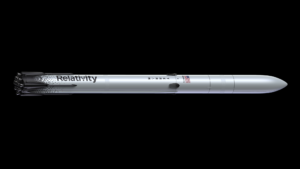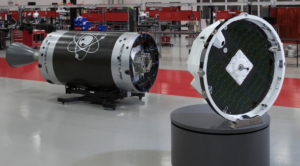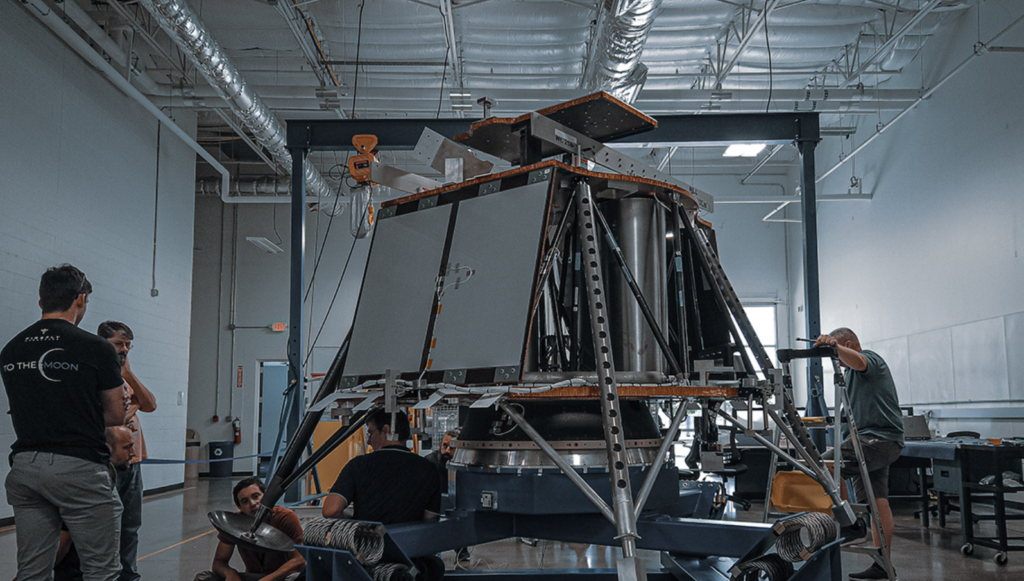
Firefly Aerospace Continues To Work On Upcoming Moon Mission
It seems almost everywhere you look within the space industry a company or agency is working on a new ambitious project for the future. Rocket Lab’s launch to the Moon is scheduled only days from now and even companies like Firefly Aerospace are working towards a Moon landing as well. Over the past few months, the company has provided some updates on its progress and what to expect.
Most recently Firefly Aerospace highlighted that it’s fully assembled Structural Qualification Model was carefully packaged and shipped to a test facility. Here it will verify all the delicate scientific payloads they’ll be carrying to the moon. This is just one of the recent updates showing promising signs as the company works towards the very ambitious goal.
Laning on the Moon is an immensely difficult task that few agencies around the world have successfully completed. This presents a daunting challenge to Firefly, yet the company is confident in its capability and the future of Blue Ghost. Here I will go more in-depth into some of the recent updates from Firefly regarding their lunar lander, and what to expect in the near future.
Recent Updates
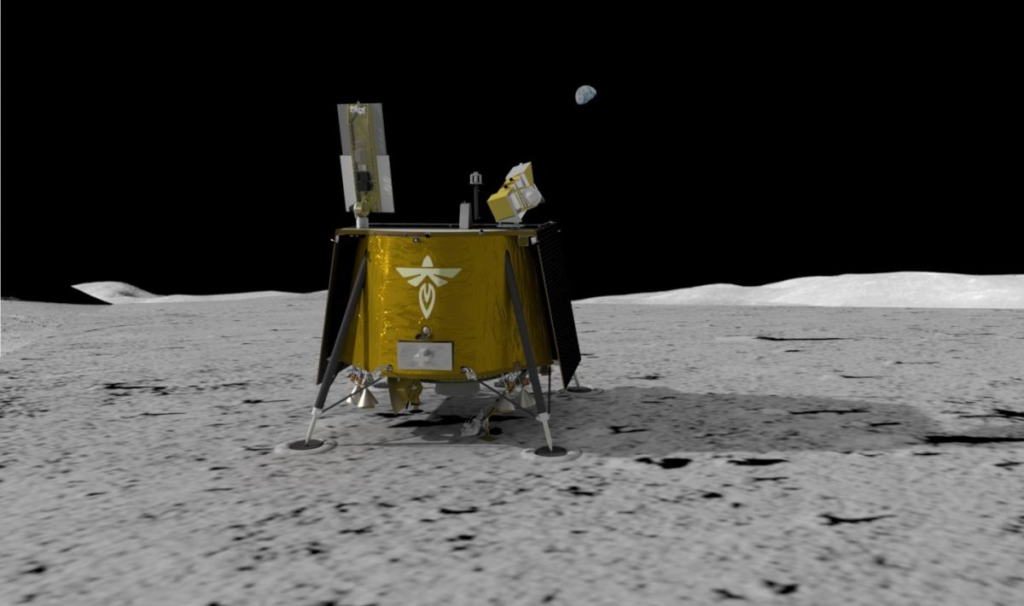
In the past few weeks alone Firefly Aerospace has shared a few updates regarding Blue Ghost lunar lander progress and how the project is coming along. This began on June 3rd when the company tweeted saying, “Firefly will be carrying a record-breaking payload for GNSS navigation with our Blue Ghost lunar lander. Great article on just one of the 10 payloads we will be sending to the Moon for @NASA.” This went more into depth on a specific payload and how it’s expected to provide the agency with a lot of valuable information. Next on June 9th, Firefly tweeted again this time mentioning, “Lunar Milestone: The full-scale structural model of our Blue Ghost Lunar Lander is a sight to behold. The team is finishing the final assembly and getting it ready for transport to a test facility for environmental testing.” This included an image of the structural model of Blue Ghost which puts into perspective the size of this lunar lander.
Finally, just under a week ago on June 21st, the company tweeted again pointing out, “Last week our fully assembled Structural Qualification Model was carefully packaged and shipped to a test facility to verify all the delicate scientific payloads we’ll be carrying to the moon will survive the exciting rocket launch to space.” Included with this tweet were multiple images of the lunar lander model being packaged and shipped for testing. It’s clear that the company has put a lot of effort into reaching the Moon and have ambitious plans beyond the initial mission with NASA.
Blue Ghost

Now that we know more about some of the recent updates on Blue Ghost, we can take a closer look at its journey over time and what the lunar lander has to offer. The initial Blue Ghost mission was awarded by NASA as part of the Commercial Lunar Payload Services (CLPS) program to deliver a suite of 10 NASA-sponsored payloads, as well as other commercial payloads, to the lunar surface in 2024. The initial award was over $93 million dollars. These payloads will operate using lander-provided data and power resources through transit to the Moon, for an entire lunar day, and into the lunar night in Mare Crisium. The purpose of this mission is to support scientific lunar research and contribute to developing a sustainable presence on the Moon. Firefly is confident that Blue Ghost will fly yearly lunar surface missions to diverse locations including the lunar poles and far side.
After receiving the contract from NASA for the CLPS program, Firefly began working on the project. Not long after the company released a big announcement in relation to this mission. In May of 2021, Firefly announced that it had awarded a contract to SpaceX to launch its Blue Ghost lunar lander in 2023. At the time of this announcement, Shea Ferring, Firefly Senior Vice President of Spacecraft, said, “Firefly is excited to fly our Blue Ghost spacecraft on the highly reliable Falcon 9, which will deliver NASA instruments and technology demonstration payloads that support NASA science goals and NASA’s Artemis program. The high performance of SpaceX’s Falcon 9 launch vehicle permits a lunar transit using minimal Blue Ghost propulsion resources, thereby allowing the lander to deliver more than 150 kg of payload to the lunar surface.” Firefly was awarded the CLPS 19D task order by NASA in February 2021 and has since made rapid progress on the Blue Ghost program. At the time the team had key long lead items on order, production underway, and was conducting regular vision navigation test flights at Firefly’s one-acre Briggs, Texas lunar landscape site.
The next milestone came In October of 2021 when the company announced it reached a major milestone with the successful completion of the Critical Design Review (CDR) of their Blue Ghost lunar lander. This CDR paved the way for construction of the Blue Ghost lander, which is scheduled to touch down in the Mare Crisium lunar basin in September of 2023 carrying ten NASA payloads as part of the $93.3-million Commercial Lunar Payload Services (CLPS) contract secured by Firefly earlier that year. The lander will also take several commercial payloads to the lunar surface. During this announcement, Dr. Tom Markusic, Firefly’s CEO mentioned, “This milestone marks another step in an aggressive schedule and meeting it continues to showcase our spacecraft team’s ability to consistently deliver incredible work”. “This mission is a forerunner of what we see as a growing cadence of recurring data and payload service missions in cis-lunar space that will kickstart a lunar economy, and we’re honored to be demonstrating our ability to deliver these services for NASA and for our commercial customers.” Blue Ghost will operate a variety of payloads through lunar transit and orbit, as well as while on the lunar surface. These payloads will explore the region’s regolith properties, geophysical characteristics, and interaction of the solar wind and the Earth’s magnetic field. There are also several key technology demonstrations related to navigation and sample collection.
The last big update on Blue Ghost happened just a few months ago in late April. Here Firefly completed the Integration Readiness Review (IRR) of Blue Ghost M1, showcasing the company’s ability to drive program readiness under an aggressive schedule. During the review, held recently at their headquarters in Cedar Park, TX, the team marked key progress milestones across multiple areas, including: Structures, Fluids, Propulsion, Core Avionics, Battery Production, Harness Production, FlatSat progress, MGSE, EGSE, and Facilities readiness to support lander integration. “Passing IRR indicates we have the necessary team, hardware, equipment, and documentation to support lander integration,” said Ray Allensworth, Blue Ghost Program Manager, who led the review process, “This team continues to overcome obstacles and perform at the highest levels, helping us pave our path to landing on the Moon in 2024,” she continued. The completion of IRR comes less than six months after completing the Critical Design Review (CDR). “The short turnaround between our CDR in October and IRR is a testament to the soundness of the baseline lander design, forward planning by program, and the creativity of our engineers in overcoming supply chain and other challenges as they arise,” said Will Coogan, Blue Ghost Chief Engineer. All of which leads up to today as the company finished the structural model and sent it off for testing with the payloads.
Taking a closer look at the lander itself, one of its unique features has to do with where it lands. Firefly highlights that nearly any landing site on the near side of the Moon is achievable with its lander, including the lunar poles. Firefly’s baseline lunar capture orbit is near-polar, providing access to any surface location for nearly identical values. Communication back to the Mission Control Center (MCC) presently requires line of site to Earth, limiting transmission from polar regions to times when the Moon’s orbit about the Earth brings the relevant pole into view. However, the lander is designed to survive through communications blackout periods and to operate autonomously so long as the sun is shining. On-board processing and storage are used to operate payloads and store data gathered during blackouts so that they can be transmitted when communications become available again (usually after 8–20 days). Just a few features that help the lander stand out.
Conclusion
Firefly Aerospace has been a very exciting company to watch over the past few years. In addition to the company’s goal of reaching orbit, they are currently making progress on a lunar lander meant to change how we access and support payloads on the Moon. While very ambitious, the company is confident in its design and the future of the lander. Very few agencies have successfully landed on the Moon, this puts in perspective how complex the process really is. We will have to wait and see how it progresses and the impact it has on the space industry.

